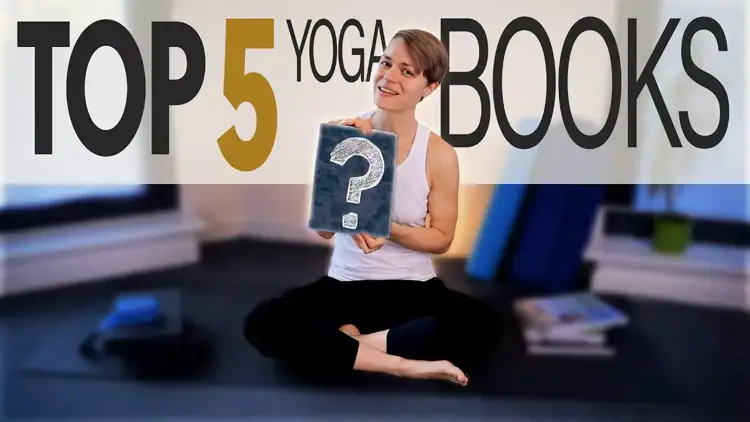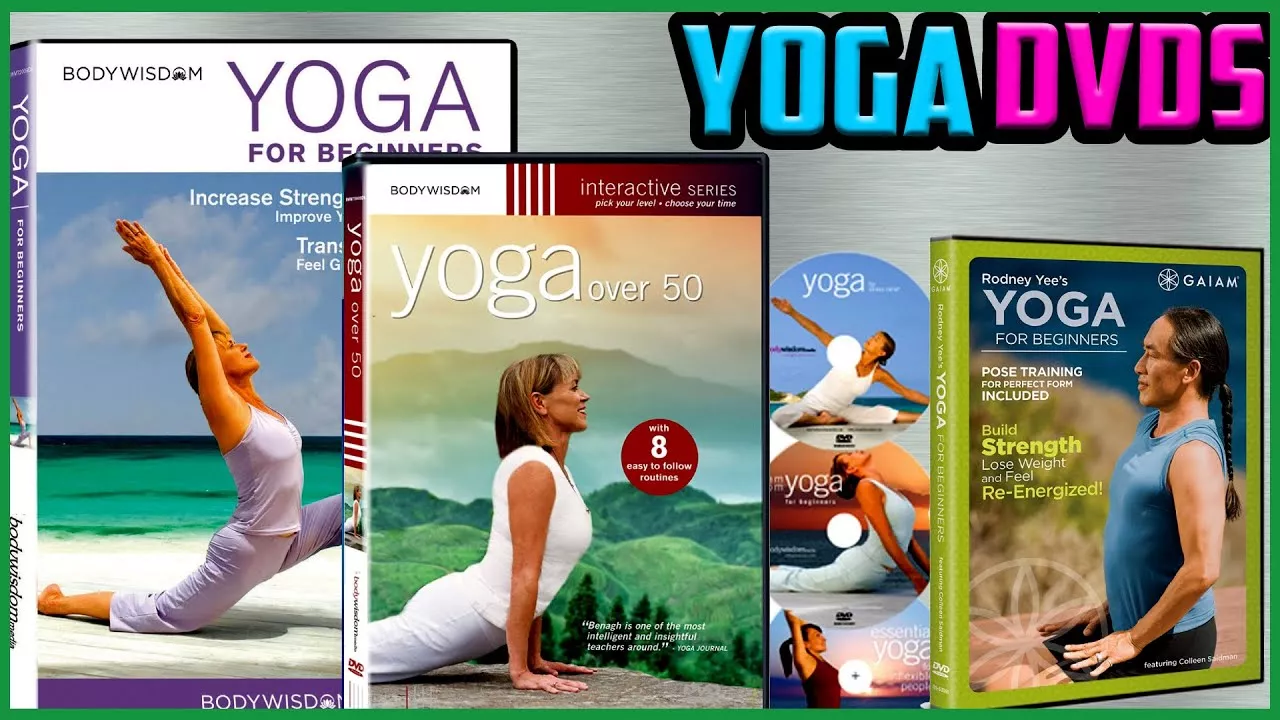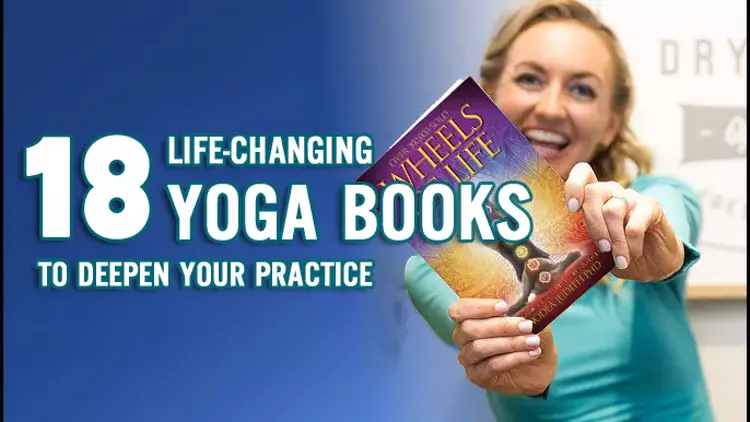Establishing a home practice between classes is beneficial for significant progress. However, remembering all the asanas and their correct forms can be challenging, particularly for newcomers.

Ashtanga yoga books serve as valuable resources, offering detailed guides to each pose, including cues for proper alignment and form.
They also delve into the history and philosophy of Ashtanga yoga, enriching one’s understanding of the practice.
For those who prefer to explore Ashtanga in the comfort of their homes, these books provide the necessary guidance.
What is Ashtanga Yoga?
Ashtanga yoga is a dynamic and structured style of yoga known for its flowing sequences and emphasis on synchronizing breath with movement.

Originating in Mysore, India, and popularized by the legendary teacher Sri K. Pattabhi Jois, this practice follows a set series of poses, designed to purify both the body and mind.
The name “Ashtanga” translates to “Eight Limbs” in Sanskrit, a reference to the eightfold path outlined in the Yoga Sutras of Patanjali.
These limbs include ethical guidelines (yamas), self-discipline (niyamas), postures (asanas), breath control (pranayama), sensory withdrawal (pratyahara), concentration (dharana), meditation (dhyana), and ultimately, liberation or enlightenment (samadhi).
Ashtanga yoga embodies this philosophy by combining physical practice with spiritual principles.
The Structure of Ashtanga Yoga
The practice is divided into six progressively challenging series:
- The Primary Series (Yoga Chikitsa) – Known as “Yoga Therapy,” this series detoxifies the body and builds strength and flexibility.
- The Intermediate Series (Nadi Shodhana) – Focuses on purifying the nervous system and balancing the energy channels.
- The Advanced Series (Sthira Bhaga) – Demands significant strength, stability, and grace, designed for highly experienced practitioners.
Each series is built on a foundation of vinyasa, which refers to the seamless flow between poses, paired with ujjayi breathing (victorious breath), drishti (specific gaze points), and bandhas (energy locks). Together, these elements create a meditative and physically demanding practice.
Key Principles of Ashtanga Yoga
- Breath Control (Ujjayi Pranayama): Practitioners maintain steady, audible breathing throughout the practice, helping to generate heat, detoxify the body, and keep the mind focused.
- Movement with Breath (Vinyasa): Each movement in Ashtanga yoga is linked to an inhale or exhale, creating a dynamic flow that enhances focus and coordination.
- Gaze (Drishti): Specific focal points for each pose cultivate concentration and inner awareness.
- Heat and Detoxification: The intense physical practice generates internal heat, known as tapas, which purges toxins from the body and clears the mind.

Benefits of Ashtanga Yoga
- Physical Fitness: The structured sequences build strength, flexibility, and endurance. Regular practice tones the muscles and improves posture.
- Mental Clarity: The meditative nature of the practice fosters mindfulness and reduces stress, promoting emotional stability.
- Self-Discipline: Ashtanga yoga requires consistent practice, instilling habits of commitment and perseverance.
- Spiritual Growth: The integration of philosophy and physical practice encourages a deeper connection with oneself and the universe.
Who is Ashtanga Yoga For?
Ashtanga yoga is ideal for individuals who thrive in structured environments and enjoy a challenge.
While it can be demanding, modifications and guidance from an experienced teacher make it accessible to practitioners at all levels.
However, beginners should approach the practice gradually, focusing first on mastering the foundational poses and breathwork.
Ashtanga yoga is more than just a physical exercise; it’s a transformative journey that harmonizes the body, mind, and spirit.
Whether you’re looking to improve your physical health, deepen your understanding of yoga philosophy, or cultivate inner peace, Ashtanga offers a pathway to holistic well-being.
Why Buy an Ashtanga Yoga Book?
Ashtanga yoga books are invaluable tools for anyone looking to deepen their understanding and practice of this transformative style of yoga.
Whether you’re a complete beginner or an experienced practitioner, having a comprehensive guide can significantly enhance your learning experience, both on and off the mat.

Here are some compelling reasons to invest in an Ashtanga yoga book:
1. Guidance for Home Practice
Consistency is crucial in Ashtanga yoga, and maintaining a regular practice can be challenging without access to frequent in-person classes.
An Ashtanga yoga book acts as your personal teacher, offering step-by-step instructions for each pose, sequences, and transitions.
- Benefits:
- Provides clear directions for self-practice at home.
- Eliminates the need to rely solely on memory to recall sequences.
- Offers modifications and tips for adapting poses to your level.
- Who It’s For:
Ideal for those building or refining a home practice, especially if you live far from a yoga studio or prefer practicing on your own schedule.
2. Deeper Understanding of Poses
While attending yoga classes is beneficial, teachers often cannot provide detailed explanations for every pose within a session’s time constraints.
Yoga books break down each asana with detailed descriptions, illustrations, and alignment cues.
- Benefits:
- Learn the proper technique and alignment for each pose, reducing the risk of injury.
- Explore the anatomical and energetic aspects of asanas.
- Gain insight into common mistakes and how to correct them.
- Who It’s For:
Perfect for practitioners who want to refine their form and fully understand the purpose and mechanics of each posture.
3. Philosophical and Spiritual Insights
Ashtanga yoga isn’t just a physical practice—it’s deeply rooted in yoga philosophy and spiritual traditions.
Many books delve into the eightfold path, ethical principles, and meditative practices that are integral to the discipline.
- Benefits:
- Provides context and meaning behind the physical practice.
- Encourages personal growth by connecting asanas to larger philosophical ideas.
- Enhances your mindfulness and self-awareness during practice.
- Who It’s For:
For yogis interested in the spiritual and philosophical dimensions of yoga, these books offer a bridge between physical postures and deeper self-discovery.
4. Access to Expert Knowledge
Books authored by seasoned practitioners and certified teachers bring decades of experience and wisdom directly to your fingertips.
Many of these authors have trained under Ashtanga yoga’s founders, offering authentic insights that can’t be found elsewhere.
- Benefits:
- Learn directly from the knowledge and experiences of recognized Ashtanga authorities.
- Gain tips and tricks to overcome challenges in your practice.
- Access unique interpretations and methodologies.
- Who It’s For:
Practitioners who value authoritative guidance and want to learn from some of the most respected figures in the Ashtanga yoga community.
5. Customizable Learning at Your Pace
Yoga classes typically follow a set pace determined by the teacher. Books, however, allow you to learn and progress at your own speed.
Whether you’re focusing on a challenging pose or exploring the philosophy, you can take the time you need to absorb the information.
- Benefits:
- Provides the flexibility to revisit and review poses or concepts as needed.
- Allows for a personalized approach to learning.
- Enables in-depth study without the pressure of keeping up with a class.
- Who It’s For:
Anyone who enjoys self-paced learning and wants the freedom to tailor their practice to their individual goals.
6. Cost-Effective Investment
Compared to attending multiple yoga classes or workshops, a yoga book is a one-time investment that provides lifelong access to valuable knowledge.
- Benefits:
- Affordable way to gain in-depth guidance and inspiration.
- Serves as a long-term resource for reference and growth.
- Complements studio or online classes by reinforcing what you learn.
- Who It’s For:
For budget-conscious yogis who want access to reliable resources without breaking the bank.
7. Portable and Convenient
Yoga books are easy to carry and can be used anywhere—whether you’re at home, traveling, or practicing in a quiet outdoor setting.
- Benefits:
- No need for internet or digital devices.
- Portable enough to accompany you to yoga retreats or vacations.
- Encourages screen-free practice, promoting focus and mindfulness.
- Who It’s For:
Anyone who prefers physical or portable resources that can be accessed anytime, anywhere.
Investing in an Ashtanga yoga book can enhance your practice in countless ways, providing not just physical guidance but also inspiration and a deeper connection to the essence of yoga.
Whether you’re mastering poses, exploring philosophy, or cultivating a dedicated home practice, these books are a worthwhile addition to your yoga journey.
The best Ashtanga yoga books
1. Ashtanga Yoga: The Practice Manual by David Swenson
This book is often regarded as the ultimate guide for Ashtanga practitioners at any level.

With over 650 photos, it provides step-by-step instructions for both the primary and intermediate series, offering multiple variations for each pose to accommodate practitioners of varying flexibility and skill levels.
Pros:
- Comprehensive coverage of Ashtanga sequences, making it suitable for beginners and advanced practitioners alike.
- Clear, high-quality visuals that simplify complex poses.
- Multiple variations of poses cater to practitioners who may need modifications.
- Easy-to-follow format with practical tips for building a home practice.
Cons:
- The book focuses heavily on the physical aspect of yoga and provides limited insights into the philosophical or spiritual aspects of the practice.
- Some practitioners may find the instructions too concise for highly challenging poses.
Why it’s a must-read:
David Swenson’s approachable style makes this manual both a reliable reference and an inspiring read.
Whether you’re struggling to remember the sequence or looking to deepen your understanding of each asana, this book is an invaluable tool.
2. Ashtanga Yoga: Practice and Philosophy by Gregor Maehle
A blend of practical guidance and philosophical depth, this book is perfect for beginners looking to dive deeper into the essence of Ashtanga yoga.

Gregor Maehle explains the poses with precision while tying them to the broader yoga philosophy.
Pros:
- Detailed descriptions of each pose in the primary series, including anatomical insights.
- Explores the Yoga Sutras of Patanjali, helping readers understand the philosophical foundation of the practice.
- Provides guidance on pranayama (breathwork) and meditation, enriching the yogic experience.
Cons:
- The philosophical sections may feel dense or advanced for readers unfamiliar with yoga’s spiritual roots.
- Limited focus on modifications or variations for beginners.
Why it’s a must-read:
This book is ideal for those who want to go beyond physical poses and connect with the spiritual and philosophical dimensions of yoga.
Gregor Maehle brings an authentic and scholarly perspective, making it an excellent companion for any Ashtanga journey.
3. The Power of Ashtanga Yoga by Kino MacGregor
Authored by Kino MacGregor, a globally renowned Ashtanga teacher, this book provides a detailed breakdown of each pose in the primary series.

Kino also focuses on integrating breath, posture, and gaze for a holistic approach to the practice.
Pros:
- Accessible language and clear instructions make it beginner-friendly.
- Emphasizes the connection between breath, movement, and focus, enhancing the meditative aspect of Ashtanga.
- Beautiful visuals and step-by-step guidance for each pose.
- Includes insights on cultivating a consistent, disciplined practice.
Cons:
- Focused primarily on the primary series, so intermediate or advanced practitioners may find it limiting.
- Less emphasis on the philosophical or historical aspects of yoga.
Why it’s a must-read:
Kino’s passion for Ashtanga yoga shines through in her writing, making this book both informative and motivating.
It’s especially helpful for beginners who need detailed guidance and encouragement.
4. Yoga Mala by Sri K. Pattabhi Jois
This classic book, written by the founder of Ashtanga yoga, is a cornerstone text for understanding the ethical, philosophical, and practical foundations of the practice.

It provides an overview of the primary series with a focus on the importance of breath, posture, and gaze.
Pros:
- Authored by the originator of Ashtanga yoga, offering an authentic perspective.
- Combines practical guidance with philosophical reflections on the purpose of yoga.
- Explores the significance of proper breathing (ujjayi), drishti (gaze), and vinyasa flow.
Cons:
- The language and tone can feel formal or dated for modern readers.
- Limited visual aids; relies on textual descriptions for poses.
Why it’s a must-read:
Yoga Mala is a timeless classic that connects readers to the roots of Ashtanga yoga.
It’s a must-have for those who want to delve into the traditional teachings and understand the deeper meaning behind the practice.
5. Ashtanga Yoga: The Intermediate Series by Gregor Maehle
For practitioners who are ready to progress beyond the primary series, Gregor Maehle’s book offers a detailed exploration of the intermediate series.

It includes insights into anatomy, mythology, and the spiritual aspects of each pose.
Pros:
- Thorough analysis of each pose in the intermediate series, with anatomical and spiritual insights.
- Explores the mythology behind the poses, adding depth to the practice.
- Offers practical advice for transitioning from the primary to intermediate series.
Cons:
- Not suitable for beginners; assumes a solid foundation in the primary series.
- Some readers may find the in-depth explanations overwhelming.
Why it’s a must-read:
This book is perfect for intermediate practitioners who want to deepen their understanding of the poses and the philosophy behind them.
Gregor Maehle’s detailed approach makes it a valuable resource for advancing in Ashtanga yoga.
By incorporating these books into your practice, you can enhance both your technical skills and your understanding of Ashtanga yoga’s profound philosophy.
Each of these resources offers unique insights and guidance tailored to different levels of experience and aspects of the practice.



